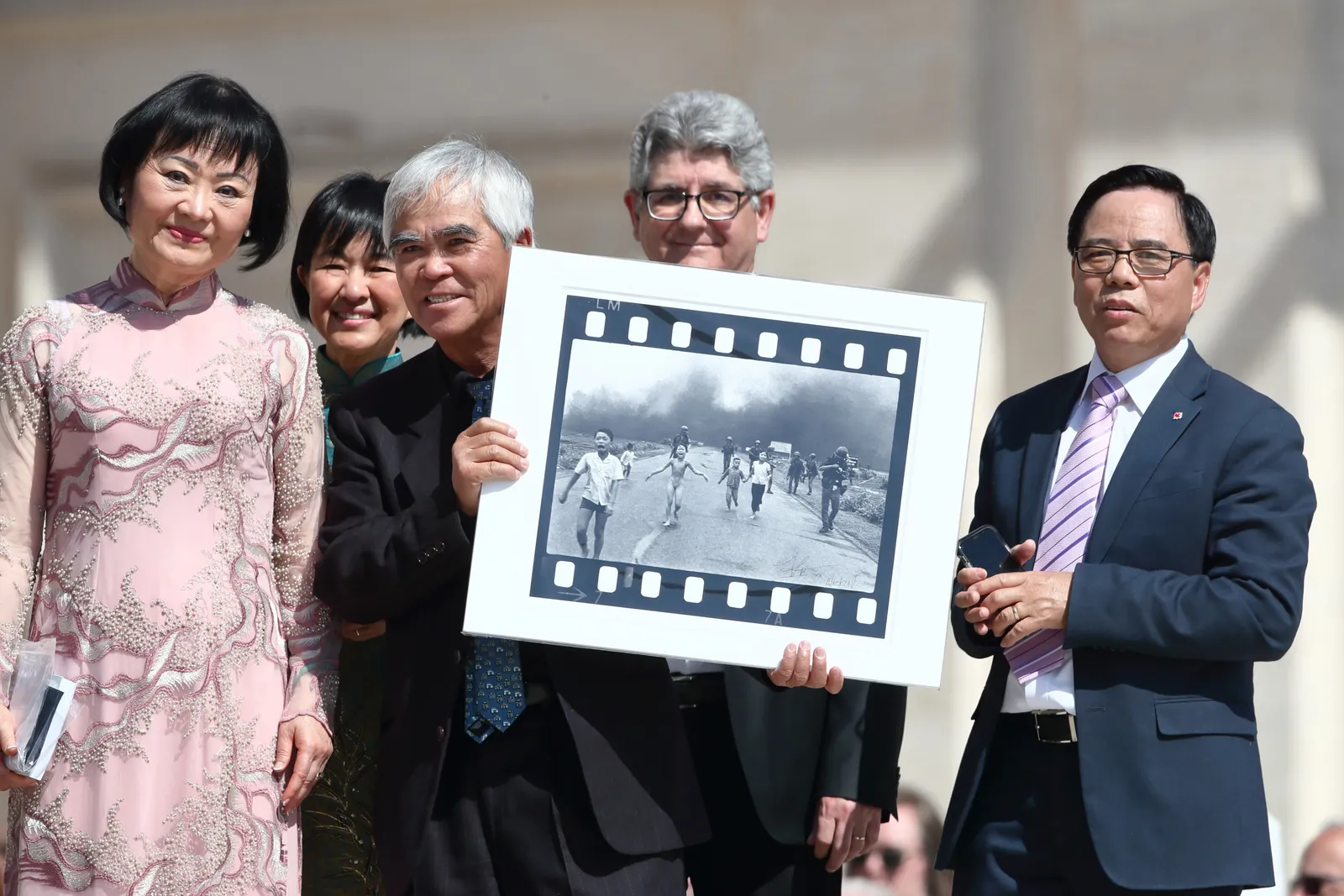The iconic “Napalm Girl” photo, one of the most poignant and powerful images of the 20th century, remains a symbol of the horrors of war. Capturing the harrowing moment of a young girl fleeing a napalm attack in South Vietnam, the image, taken on June 8, 1972, has been etched into the collective memory of millions.
Over the years, it has been credited to Associated Press (AP) photographer Nick Ut, who received widespread acclaim, including a Pulitzer Prize for his work.
However, a new documentary titled The Stringer, which premiered at the Sundance Film Festival, has raised serious questions about the authorship of this photograph, with a Vietnamese freelance photographer, Nguyen Thanh Nghe, now claiming that he is the true creator of the image.
As the debate heats up, one of the most unforgettable photographs in history has sparked a fresh controversy over the question of who should rightfully take credit for capturing this life-changing moment.
The Powerful Legacy of the ‘Napalm Girl’ Photo
The image of Phan Thi Kim Phuc, a nine-year-old girl running naked down a road in Trang Bang, South Vietnam, screaming in pain as she flees from a napalm attack, is seared into the minds of millions.
The horrors captured in the photo helped fuel anti-war sentiment across the world, bringing attention to the brutal realities of the Vietnam War.
Kim Phuc had been severely burned in the attack, and although her younger brother tragically died, she survived after receiving medical attention from Nick Ut, who stopped his work as a photographer to rush her to the hospital.
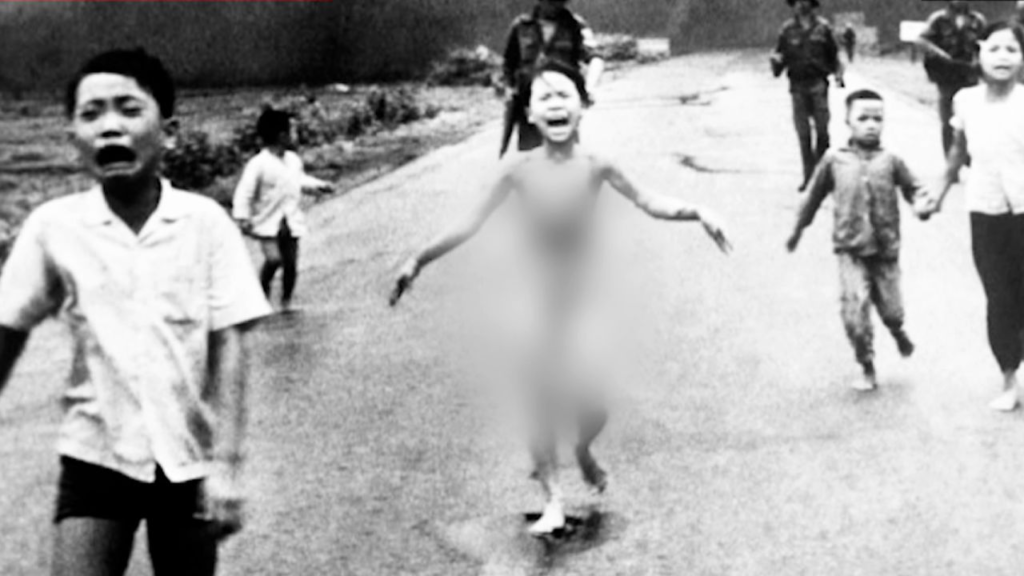
The image of Kim Phuc, often referred to simply as “Napalm Girl,” was published by the AP and was widely disseminated, appearing in major newspapers and magazines around the globe. The photograph captured an unspeakable moment of fear and suffering, making it one of the most defining images of the Vietnam War.
Read : Satellite Images Shows Extent of Destruction in Gaza in 1 Year of Israel-Hamas War
The photo not only won Ut the Pulitzer Prize but also made a significant impact in rallying public opinion against the war. In the years that followed, Kim Phuc recovered, eventually settling in Canada and becoming a UNESCO Goodwill Ambassador, using her story to speak out against the horrors of war and advocate for peace.
For decades, Nick Ut, who was an AP photographer at the time, has been credited with taking the photograph. However, a new controversy has emerged regarding the true identity of the photographer, and with it, a complex story of journalistic ethics, memory, and truth.
The Controversy: Who Really Took the ‘Napalm Girl’ Photo?
In The Stringer, a documentary that premiered at the Sundance Film Festival in January 2025, the long-established story of the “Napalm Girl” photo’s authorship is being questioned.
The documentary, directed by Gary Knight and produced by Fiona Turner, suggests that the true photographer behind the iconic image may not have been Nick Ut but rather a freelance Vietnamese photographer named Nguyen Thanh Nghe.
Nguyen Thanh Nghe, who was working as a driver for an NBC news crew on June 8, 1972, claims that he, not Ut, took the photo. Nghe explains that he was on the scene in Trang Bang that day when the napalm attack occurred.
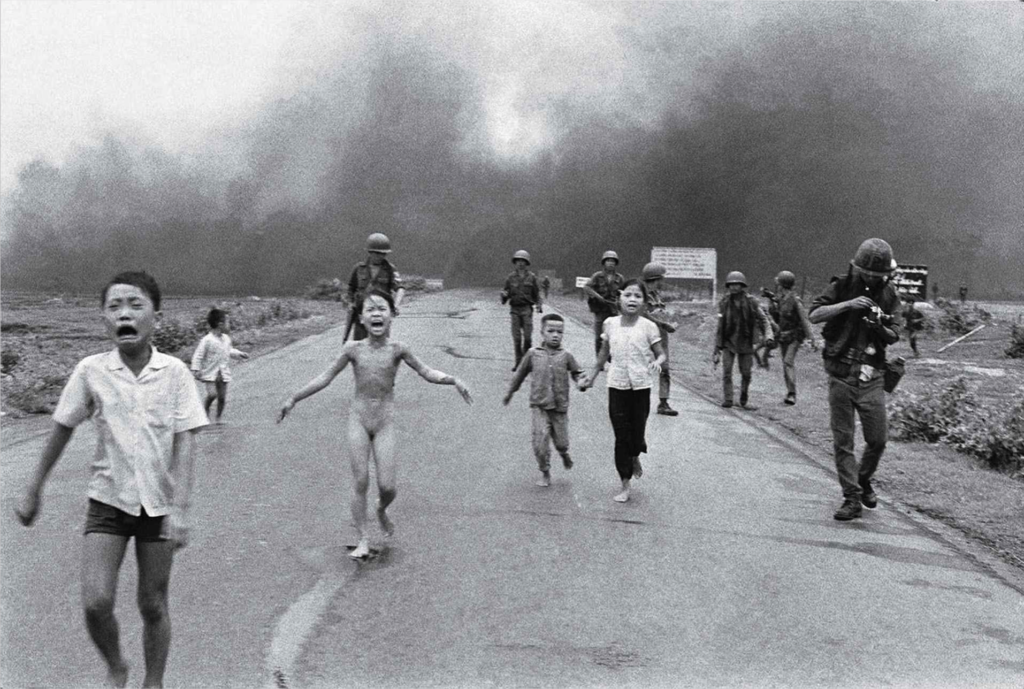
According to Nghe, he sold the photo to the AP for a modest $20, and in return, he received a print of the image — one that his wife later destroyed. Nghe’s claim has ignited a fierce debate over the years, with many questioning why the AP would have attributed the photograph to Ut when there were other photographers on the scene, including Nghe himself.
The documentary’s primary source for this claim is Carl Robinson, a former AP photo editor who was stationed in Saigon at the time.
In the film, Robinson recalls that he was tasked with writing the caption for the famous photograph when Horst Faas, the AP’s two-time Pulitzer Prize-winning chief of photos in Saigon, directed him to credit the image to Nick Ut. Robinson recounts Faas telling him to “Make it Nick Ut,” but he also suggests that the decision may have been influenced by editorial decisions that are not entirely clear.
Robinson, who was dismissed by the AP in 1978, now admits that he regrets not questioning the attribution of the photo at the time. He also claims that after interviewing Nguyen Thanh Nghe, he believes that the Vietnamese freelancer is the rightful photographer behind the image.
“I didn’t want to die before this story came out,” Robinson states, expressing his desire to find Nghe and apologize for his role in the misattribution of the photograph.
The filmmakers also conducted an investigation into the origins of the photo, which included collaborating with a French forensics team.
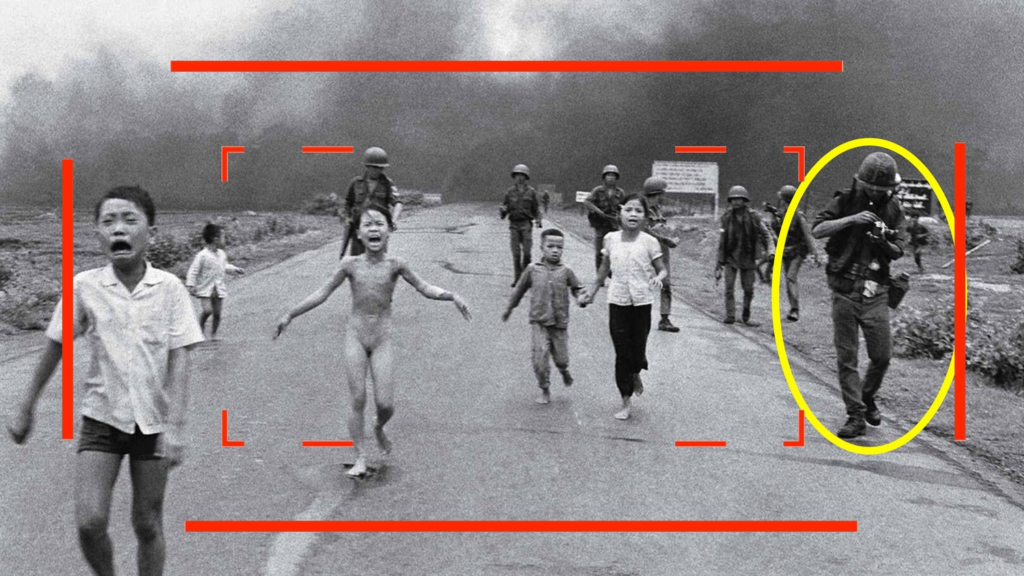
The team analyzed the likelihood of Nick Ut having been in the right position to capture the famous shot, ultimately concluding that it was highly unlikely he could have done so. This, they argue, lends weight to Nghe’s claim that he was the true photographer of the “Napalm Girl.”
However, this claim is not without opposition. Phan Thi Kim Phuc herself, the subject of the photograph, has stated unequivocally that it was Nick Ut who took the photo. She has gone on record to say, “I have refused to participate in this outrageous and false attack on Nick Ut raised by Mr. Robinson over the past years.”
Kim Phuc’s connection to Ut runs deep; it was Ut who rushed her to the hospital that day, quite literally saving her life. She considers Ut not just a photographer but a hero for his actions that day.
The Ethical and Journalistic Implications
The debate over the authorship of the “Napalm Girl” photo raises important questions about journalistic ethics, historical memory, and the role of local freelance photographers in the international media landscape.
As the documentary The Stringer highlights, there are multiple layers to this story — the personal accounts of those involved, the role of photo editors at major news outlets, and the complex reality of war reporting.
One of the most striking aspects of the controversy is the tension between the recognition of Nick Ut’s iconic role in capturing the photo and the often overlooked contributions of freelance photographers like Nguyen Thanh Nghe.
The role of local stringers — freelance photographers or reporters who work on assignment for news agencies but do not receive the same recognition or compensation as staff journalists — is critical in understanding how major events are documented. In this case, Nghe’s claim underscores the difficulties freelance photographers face in gaining credit for their work.
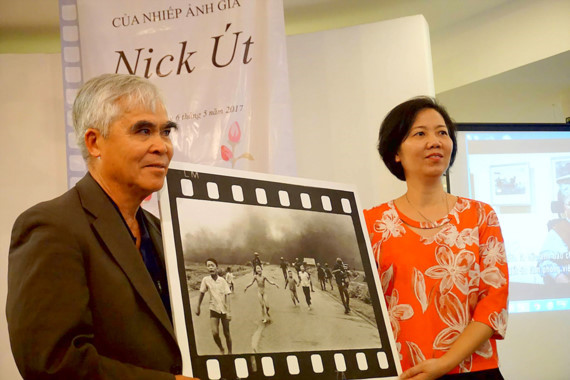
Furthermore, the ethical considerations surrounding the attribution of such a significant image highlight issues of racial injustice and historical memory. While Ut, a well-known AP photographer, has received international acclaim for his photograph, it is now being suggested that Nghe, a local Vietnamese photographer, was denied the credit he deserved.
The filmmakers of The Stringer argue that this reflects the broader dynamics of power and visibility in journalism, where the contributions of local photographers are often marginalized in favor of Western photographers or larger agencies.
For the Associated Press, the controversy also touches on the credibility and accountability of its editorial process. The AP has defended the attribution of the photo to Nick Ut, stating that it conducted its own investigation into the matter and found no reason to alter the historical record.
The agency has also called on the filmmakers to release information related to the investigation, including a visual analysis and the contributors’ non-disclosure agreements.
The Quest for Truth
After more than 50 years, the debate over who took the “Napalm Girl” photograph is far from settled. While the iconic image will forever remain a symbol of the horrors of war and the resilience of the human spirit, the controversy over its authorship raises important questions about who gets to tell the story and how history is recorded.
Whether or not Nguyen Thanh Nghe is ultimately recognized as the true photographer, his claim has brought to light the often-overlooked contributions of local journalists and freelance photographers in the global media landscape.
The ongoing discussion serves as a reminder of the complexities of truth, memory, and justice in the world of journalism. As for Kim Phuc, her gratitude to Nick Ut for saving her life remains unchanged, regardless of who took the photo that immortalized her pain.
let’s enjoy few years on earth with peace and happiness….✍🏼🙏

